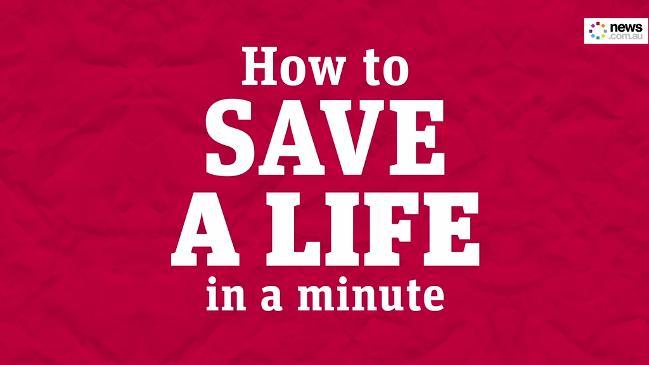Which organs can be transplanted and who will benefit?
AN ORGAN donor can save up to 10 lives. Here’s a list of each organ that you can donate and who it could help.

NOT everyone wants to think about what happens to their body after they die but what if you could leave a legacy to be proud of?
This week news.com.au has been highlighting the lives that have been changed through organ donation as part of its Take a Minute, Save a Life campaign.
For some, like Rob and Karin Kinny, the decision to approve the donation of their son’s organs has provided them with comfort after his death.
“We know that he’s helped five people that we’re aware of,” Ms Kinny told news.com.au.
“Someone has received his lungs, two people have received his kidneys, one of them a child. “A couple of people have received heart valves, one of them we were told was a baby.”
Mr and Mrs Kinny were proud to stand by Nathan’s wish to be a donor.
“Out of something very sad and catastrophic, you need to focus on the good, and the good is that there are these people whose lives have been altered for the better,” Ms Kinny said.
“That’s an amazing thing to be remembered by.”
Here’s how your organs can change someone’s life.
SIGN UP NOW: To become a registered organ donor, click here

LUNGS
Lung transplants are often needed by people with cystic fibrosis or emphysema whose own lungs cannot provide enough oxygen to their bodies.
Both lungs can be transplanted into one person or separated and help two people.
While many people believe lungs from people who have smoked can’t be donated, this isn’t true. Doctors will test how well they lungs work and will still use them if they are healthy.
LIVER
People with metabolic liver disease, Hepatitis B or C, and congenital liver defects such as biliary atresia can require liver transplants to stay alive
Since the liver can regrow, an adult liver can be made smaller and transplanted into a child. It can also be divided and transplanted into two recipients.
KIDNEYS
Those with severe kidney failure, can go on dialysis but will need a kidney transplant to stay alive.
The two kidneys can be transplanted together into one recipient or they are separated and transplanted into two people.
RELATED: ‘I thought I was going to die waiting’
RELATED: Illegal trade fuelled by Aussies

HEART
People may need a heart transplant due to a viral infection, inherited heart defect or because of heart failure.
Heart tissue, such as heart values, can also be donated separately. These may be used to repair congenital defects in young children and babies, and also used to replace diseased valves in adults.
RELATED: Why this teenager got a second chance at life

SMALL INTESTINE
A diseased or missing part of a person’s small intestine can be replaced with healthy tissue and allow people to absorb the nutrients they need and live a more normal life.
BONE
Donated bone tissue can be grafted to replace bone that has been lost because of cancer or through other disease or accidents.
It is also used to help heal fractures, strengthen hip and knee joint replacements, repair curvatures of the spine (scoliosis) in children and teenagers, repair teeth and perform dental procedures.
Depending on the type of transplant required, more than 10 people may benefit from a single bone donation.
PANCREAS
The majority of pancreas transplants are performed on people who have Type 1 diabetes, which can also cause kidney failure. For this reason, the pancreas is often transplanted with a kidney from the same donor into the one recipient.
A pancreas transplants can be an effective treatment for people with Type 1 diabetes.
If the entire pancreas can't be transplanted, the insulin-producing islet cells can be transplanted separately as a treatment for diabetes.
RELATED: ‘I won’t make Christmas next year’

SKIN
Skin grafts are provided to people who have suffered infection, severe burns or other trauma that damages the skin.
Only a thin layer is taken, similar to the skin that peels in sunburn. It is usually taken from the person’s back and the back of their legs.
EYES
There are two parts of the eye that can be donated.
The cornea, which is clear tissue covering the coloured part of the eye, can restore sight to people who are partially or completely blind, often due to a genetic condition, illness or injury.
The sclera, which is the white part that surrounds the eye, can help blindness due to injury or in people who have had cancer removed from their eye.
If someone donates their whole eye, it is replaced with a prosthesis and the eye socket is closed. Corneal donors have their corneas replaced with a plastic contact lens.
In a corneal transplant, it’s only the clear front part of the eye being replaced, not the iris — the coloured part — so the eye doesn’t change colour.
RELATED: ‘It was really scary to go to the optometrist’
OTHER TISSUES
Veins, tendons and ligaments can also be donated.






